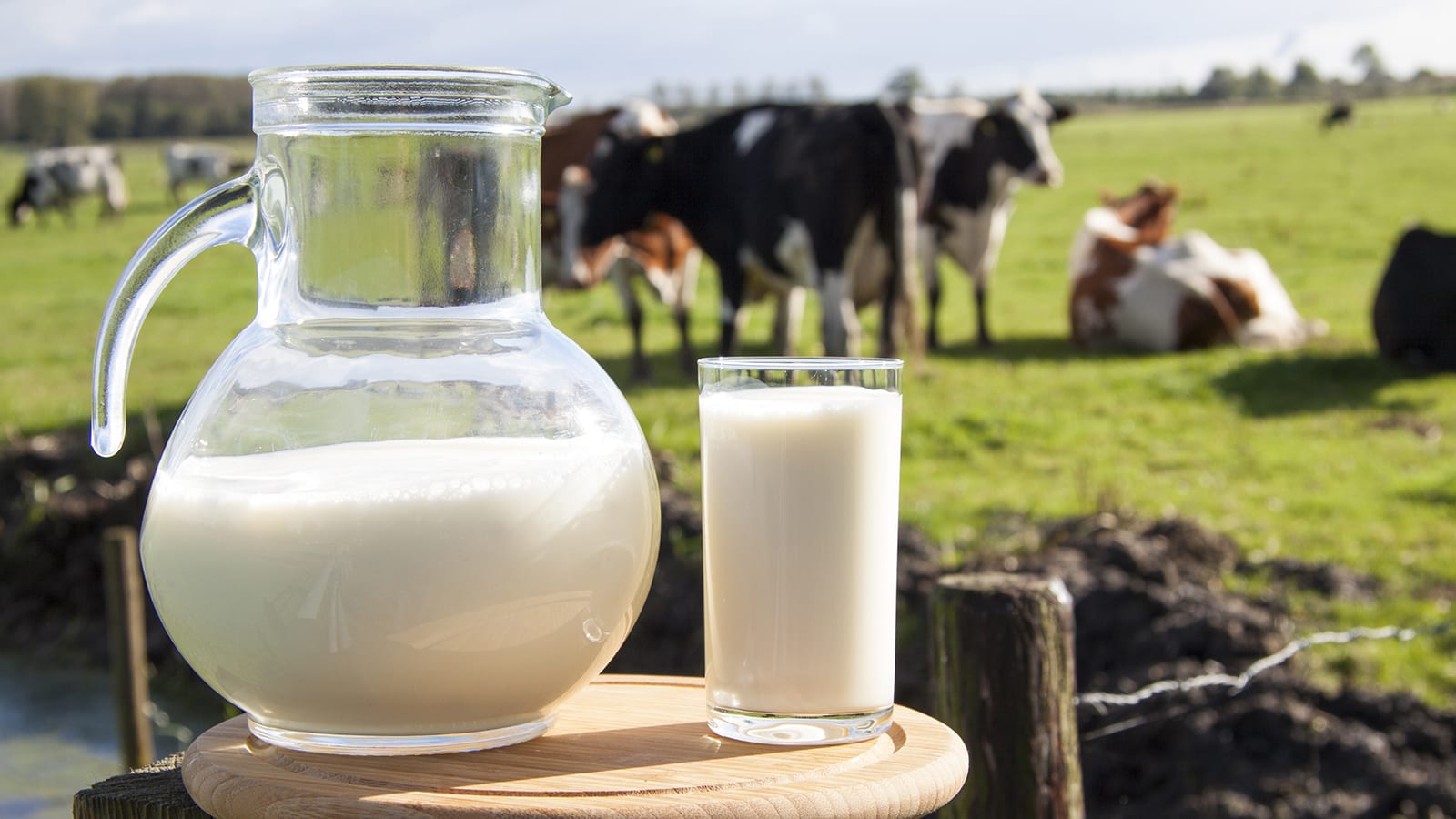Lactose intolerance over time
By Delaney Sump, guest contributor
This article was originally published in January 2022

Many adults find it increasingly difficult to eat dairy foods without suffering digestive distress. This change is sometimes due to the development of lactose intolerance, which is far more prevalent than commonly realized, especially in certain populations such as people of Asian, African, Hispanic and Indigenous descent. While lactose intolerance is fairly rare in children, it’s estimated that up to 75% of the global population loses the ability to digest lactose at some point, many not until mid to late adulthood.
What is lactose intolerance?
Lactose is a naturally occurring sugar found in dairy foods, or products made with milk. In order to be absorbed lactose first has to be broken down by the digestive enzyme lactase, which splits lactose into one molecule of glucose and one molecule of galactose—simpler sugars that our bodies can readily absorb. Primary lactose intolerance refers to instances when an individual does not produce enough lactase and thus, cannot fully digest lactose, so it proceeds through the digestive tract without being broken down and absorbed.
The uncomfortable symptoms associated with lactose intolerance arise from this undigested lactose making its way into the colon where it pulls extra water into the intestines. Undigested lactose is also fermented by the microorganisms that live in our large intestine. This fermentation, along with the extra water being pulled in by the lactose, can cause bloating, abdominal pain, diarrhea and gas. How intensely a person experiences symptoms largely depends on how much lactose was eaten, what other nutrients were consumed at the same time, and the severity of the intolerance. Symptoms are also affected by how much lactase the individual produces, which varies from person to person. This condition can develop for many reasons including age-related decline in enzyme production, digestive disorders, or having avoided dairy and lost the ability to digest lactose over time.
Warning signs of lactose intolerance
If you start noticing digestive discomfort after eating certain foods, it’s possible you are developing a food intolerance. Food allergies (such as a milk allergy) typically present with more full body symptoms such as itchy, watery eyes or difficulty breathing. An intolerance, on the other hand, usually causes digestive problems like abdominal pain, gas, bloating, diarrhea or constipation as a result of an inability to properly digest a food component like lactose.
If this sounds familiar, try to note when your symptoms occur and write down what foods you ate that day. Look for patterns. Remember that dairy is found in foods beyond milk-based products, including many commercially prepared foods such as some salad dressings, baked goods, chocolate and bread. That being said, the amount of milk in foods like bread can sometimes be small enough so as not to cause any problems for those with lactose intolerance. This relates back to the fact that your degree of intolerance (how much lactase you are producing), along with how much lactose you eat in one sitting, determines the intensity of your symptoms. Also note that issues such as irritable bowel syndrome (IBS) can cause lactose intolerance as a result of a damaged gut lining; when a disease causes a temporary decrease in your body’s ability to produce lactase, this is known as secondary lactose intolerance. In this case, addressing the root illness should lower inflammation and heal the intestines, which helps restore the body’s ability to digest lactose.
Managing lactose intolerance for the long-term
For those with lactose intolerance, the chances of seeing improvement depend on the source of the problem. If a natural intolerance or age-related decline in lactase production is the root cause, there isn’t much to be done since these issues are largely genetic. Nonetheless, lactose intolerance can be easily managed by replacing milk-based products with lactose-free milk and yogurt or fortified nondairy options like calcium-fortified oat, hemp, coconut or soy-based milk and yogurt. Also note that people with lactose intolerance can sometimes tolerate fermented forms of dairy like yogurt and aged hard cheeses, most likely due to the live bacteria in fermented foods that help to break down the lactose.
If choosing to avoid dairy, make sure to include alternative sources of calcium and vitamin D, because milk products are a significant source of these nutrients in the typical western diet. The recommended intake of calcium for most adults is 1,000 to 1,200 mg of calcium per day, which can be achieved by regularly eating foods like lactose-free dairy foods, fortified juice and nondairy milk, canned sardines, salmon, tofu made with calcium, spinach and collard greens. Vitamin D is similarly found in fortified beverages and fatty fish like salmon and tuna, though approximately 15 to 20 minutes of sun exposure a few times a week is also an excellent way to ensure sufficient vitamin D status. Calcium and vitamin D levels can also be supported through supplementation; just make sure to check with a registered dietitian before beginning a new supplement regimen. Finally, it’s worth noting that taking lactase supplements when eating dairy can help reduce digestive symptoms for some, although research has shown varying degrees of success with this approach.
The bottom line
Note that lactose intolerance is not the only reason a person may experience symptoms after eating dairy. It’s important to consult a healthcare professional if you suspect a food sensitivity so they can determine the root cause.
However, lactose intolerance can make an appearance at any point in life, and it can emerge for a variety of reasons. If you suspect lactose intolerance (or any kind of food sensitivity), consult a registered dietitian to uncover the root cause of the problem and start making a game plan for moving forward. With all the dairy-free options available these days, managing lactose intolerance is extremely doable and simply requires a little extra intention to make sure you don’t miss out on important nutrients like calcium and vitamin D.
